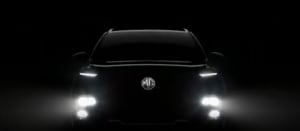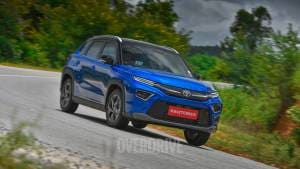Toyota Innova Hycross and Innova Crysta: Change is good?
You already know that the Toyota Innova Hycross has completely redefined what an Innova stands for. It's a hybrid, based on a front-wheel drive monocoque architecture and comes packed to the tee with features and tech you never associated with the MPV. So when so much has changed, how much of the Innova actually remains in the Hycross? There's no other way to find out other than by bringing in some perspective. And we couldn't think of a better reference point than the Innova Crysta.
Toyota Innova Hycross and Innova Crysta styling
The Toyota Innova Hycross' sheer presence is what first catches your eye when you see it alongside the Innova Crysta. This is surprising considering the Hycross is only 20mm longer and wider than the Crysta but of the same height. So a lot of it is down to the visual cues that Toyota has been able to incorporate into this MPV with the new monocoque architecture.

The wheelbase is now 100mm longer to start with, which has also significantly reduced overhangs. The large front grille, similar to Toyota's SUVs like the RAV4 and Highlander, as well as the sculpted bodywork and sharper glass area bring about this sense. The slightly higher 185mm ground clearance, compared to the 178mm of the Crysta is another
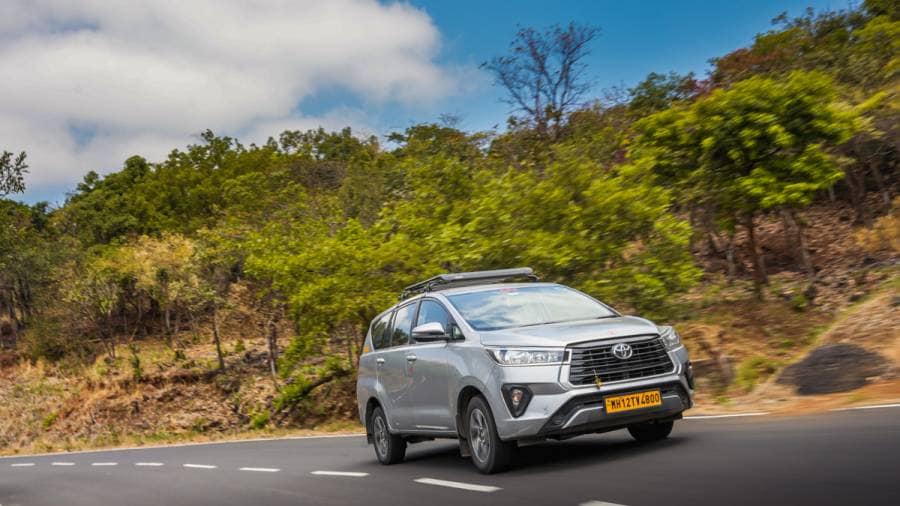
That said, the Innova Crysta still looks contemporary. The wide lamps and the big grille add a fair amount of presence. The latest version that meets the new BS6.2 emission norms also is heavily doused in chrome to further this effect. The simpler panels and boxy silhouette may not be the most visually arresting, but there is no denying the functionality that comes with this shape.
The smaller wheel sizes, 17 inches here as against the 18-inchers in the Hycross also make a notable difference taking the new Innova further away from the typical ladder-frame stance of the older one. This continues to the rear, where you have a flat, functional boot lid against the more sloping SUV-like one in the Hycross.
Toyota Innova Hycross and Innova Crysta rear seat
Even if the way the Hycross and Crysta look isn't of too much concern to you, how they feel to be chauffeured around in will almost certainly be a high priority for you and your family. We brought out our measuring tapes for this and it'll surprise you to know that the Crysta still has a smidge more headroom and knee room. Although there are significant caveats to this.
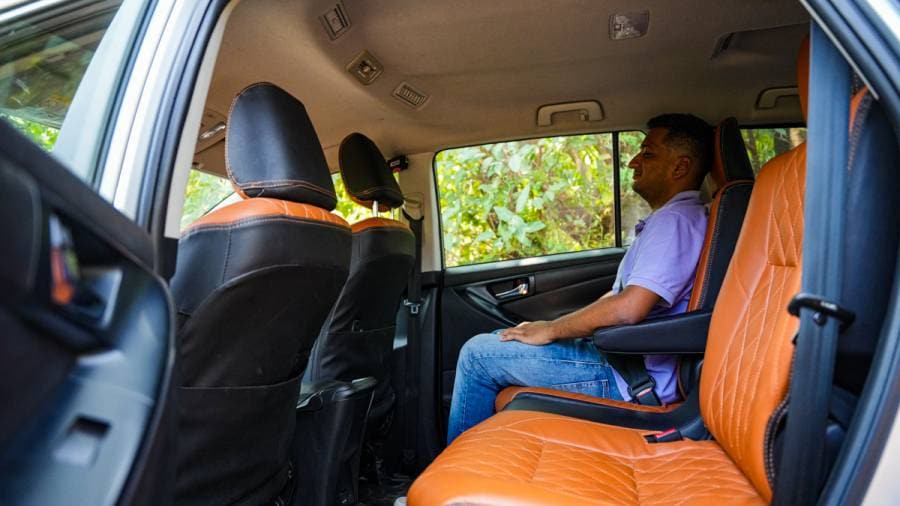
Getting into both Innovas is a step up, the Crysta's floor is high by way of its ladder-frame construction while the Hycross' hybrid gubbins underneath the floor makes for a similar sense. There's not a lot to choose between the second-row captain seats themselves. They are quite similar in terms of their back and thigh support although the Hycross takes it up a few notches with the powered backrest and the ottomans. The Crysta might have a smidge more headroom but it must be noted that the Hycross comes very close to this despite a great big panoramic sunroof and side-mounted roof vents.
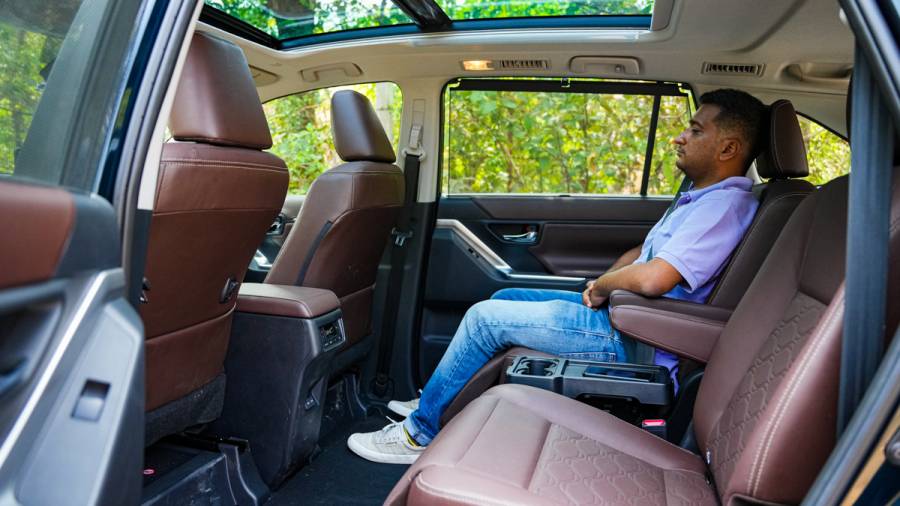
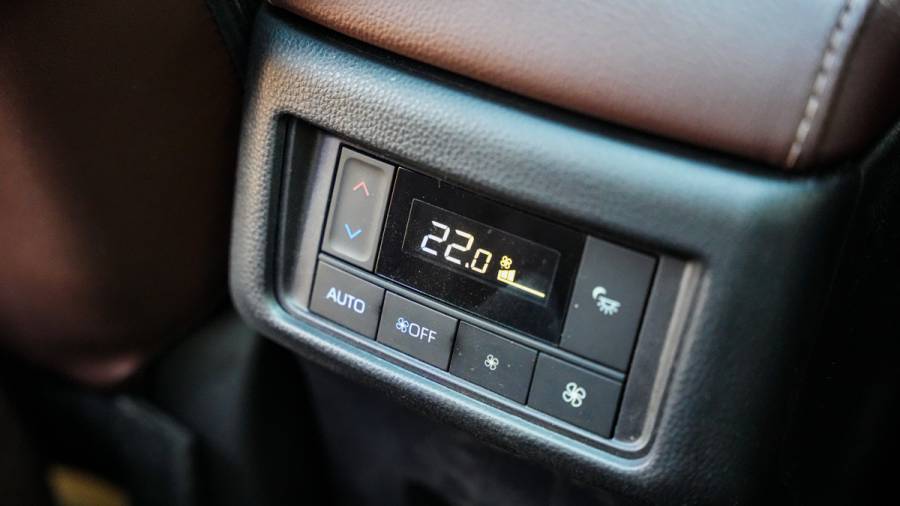
The Hycross also has much more knee and leg room when this row of seats is pushed fully back. So if you don't use the third row often, it is a great bonus. The ottomans add quite a bit of comfort in this situation. Having said that, with the second row in a middling position legroom does get tight. This is because of the battery pack placed under the front seats limiting space to stretch out your feet. The Hycross makes up for this with more amenities. You don't get the tray tables from the top-spec Crysta but you do get a folding central tray, window blinds and a separate climate zone instead of just blower controls.
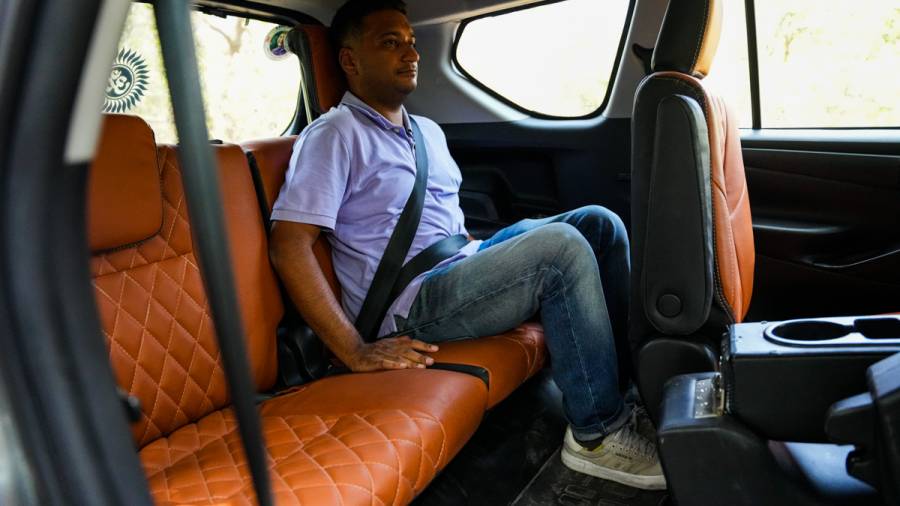
As for the third row, things start off well for the Crysta again. The seats tumble fold fully so getting in and out is much easier than in the Hycross. The more complex chairs only slide forward so getting in and out is a touch trickier. But once sat, the Hycross' more space-efficient architecture shows great benefits. You sit in a much more upright, natural position with a usable amount of knee and legroom. There's even good under-thigh support and the backrest reclines too for a touch more comfort.
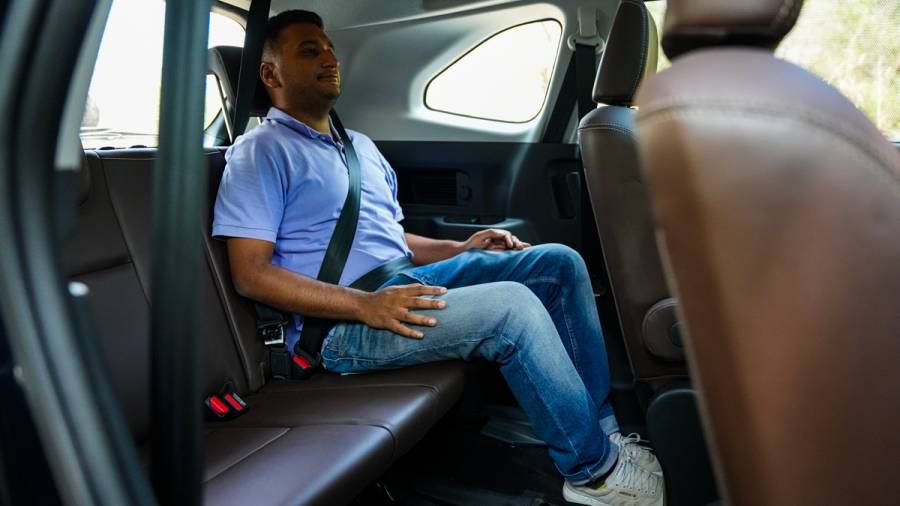
Toyota says this space is good for three and while the bench is wider than the one in the Crysta, the middle seat here is best left for children. As for the Crysta, it's a more traditional ladder-frame affair. The floor is quite high so you sit in a knees-up position and there's not as much knee room or headroom as in the Crysta, although you can tuck your feet under the front seats to stretch out a bit.
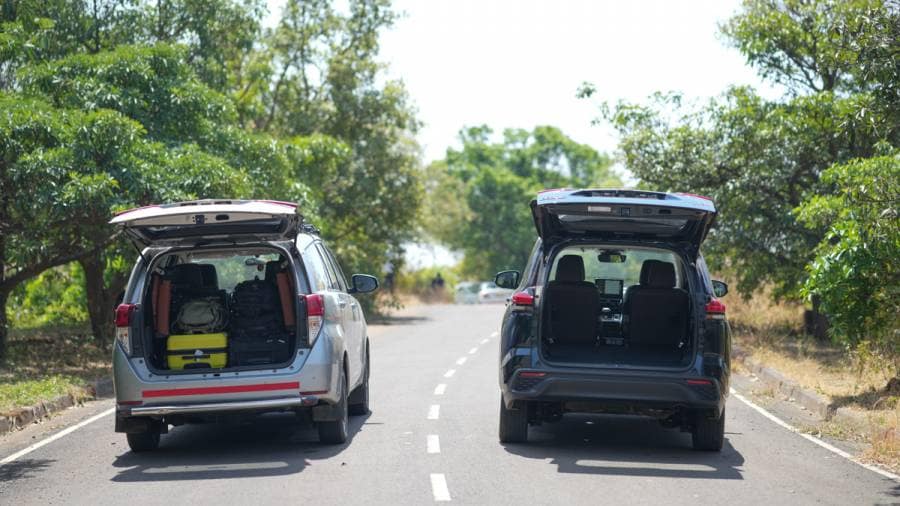
Both the Crysta and the Hycross have 300 litres of boot space with all three rows in place. The Hycross has a marginally lower loading lip but the Crysta has a wider opening and storage area. But again the practicality that the new architecture brings with it helps the Hycross have 991 litres of space with all three rows down instead of the 748 litres of the Crysta. A major contributor to this is that the Hycross' seats fold fully flat while the Crysta has the old-fashioned side-folding ones that eat into usable space.
Toyota Innova Hycross and Innova Crysta cabin, features
The Toyota Innova Crysta has always had a classless sense to it despite its interior following a strict function over form philosophy. So while the dash may not look the most contemporary anymore with largely hard plastics designed to last longer than feel nice, Toyota does spruce up the top versions of the Crysta with some imitation wood panelling and silver accenting. These top versions get an 8-inch touchscreen with useful physical buttons and there's again a simple but functional instrument cluster.
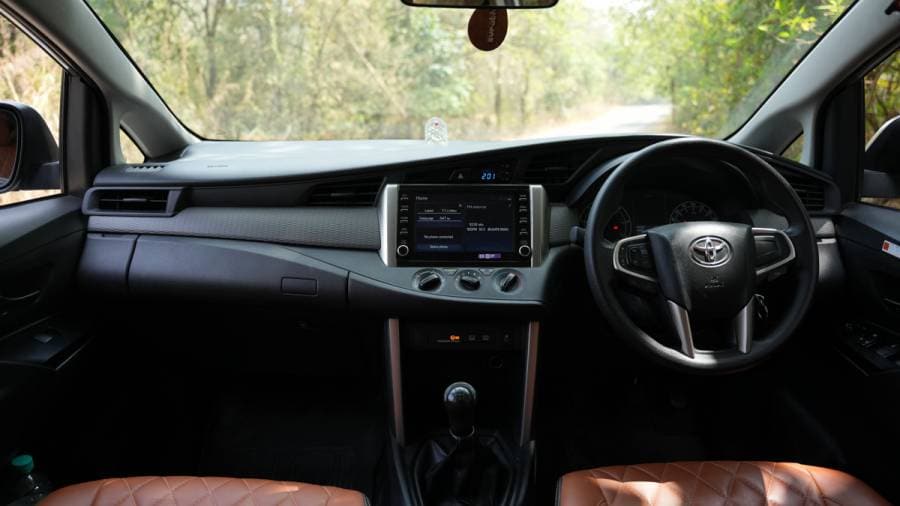
The Hycross is a massive leap forward in this respect largely due to the shift to the TNGA-C architecture. It feels much more upmarket with the more contemporary dash layout. The layered look is done up in soft brown surfaces with the passenger side shelf and the dash-mounted gear lever creating a much more open area. There are physical switches for most controls which is a great bonus. The look is more refined but the hard-wearing feel hasn't been lost.
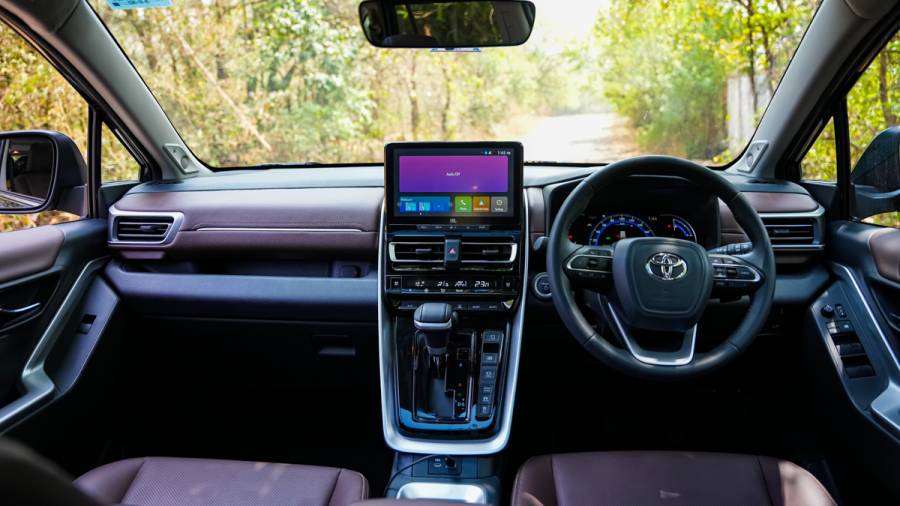
There are far more storage spaces now in the doors and centre console. You control most information through the 7-inch MID which has crisp graphics and logical menus. As for the 10.1-inch screen, it's an improvement over the one in the Crysta for sure and is quite responsive, but only controls your phone and audio functions. We would have liked crisper graphics here as well as wireless Android Auto/Apple Carplay.
You will appreciate features like the ventilated and powered seats. Other highlights are the 9-speaker JBL audio, ambient lighting, connected tech, and a panoramic sunroof. The Hycross' suit of ADAS features deserves a special mention given how intuitively they work.
Toyota Innova Hycross and Innova Crysta city driving impressions, mileage
Drive the Innova Hycross in traffic, and you start to realize that Toyota might be onto something with the massive shift that they've chosen to make in the Innova's concept. The hybrid Hycross uses a 2.0-litre Atkinson cycle petrol motor that puts out 154PS and 190 Nm paired with a 113PS and 206 Nm electric motor, with an e-CVT in the mix for a combined 186PS.
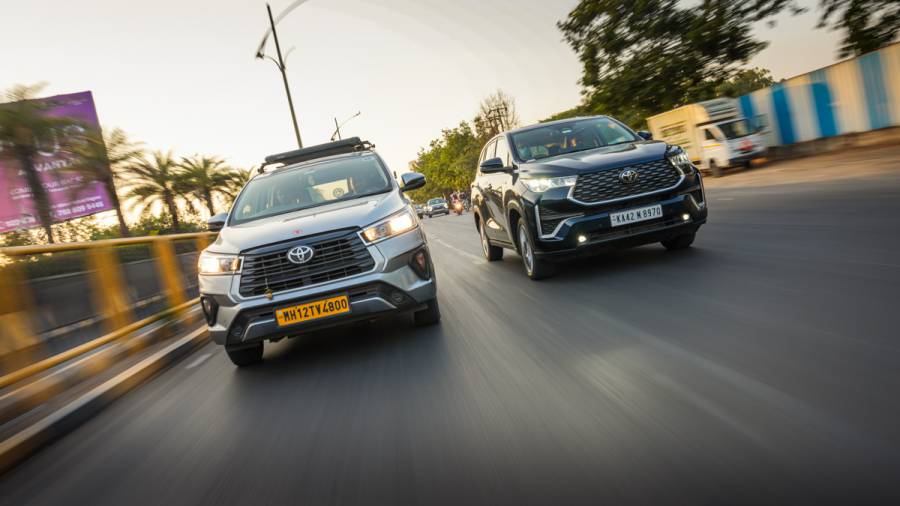
To start with, the higher SUV-like driving position gives you a great view out. The bulges on the bonnet are good markers for placing the Hycross on the road too, made much simpler still by the grainy but useful 360-degree cameras. On the move, it seems to shrink around you, especially with the heavily assisted steering. So manoeuvring in traffic is quite stress-free. The Hycross also manages to cover off bigger slow-speed obstacles like speed breakers smoother than the Crysta. The ride has a slightly firm edge to it, which you notice over a rough road but this isn't something that is a deal breaker.
The Crysta is quite the opposite. You still have a fairly good view out but the steering isn't quite at a comfortable angle and the footwell feels a touch cramped. The steering also takes quite a bit of effort in traffic, although this does improve as you go faster. As with most ladder-frame vehicles, there is some amount of jiggle to the way the Innova moves at slow speeds and over big bumps. But show it an extended rough road and it'll leave the Hycross quite some way behind in the way it absorbs these rough surfaces. In isolation, the Hycross is quite competent though in the rough stuff for a monocoque vehicle.
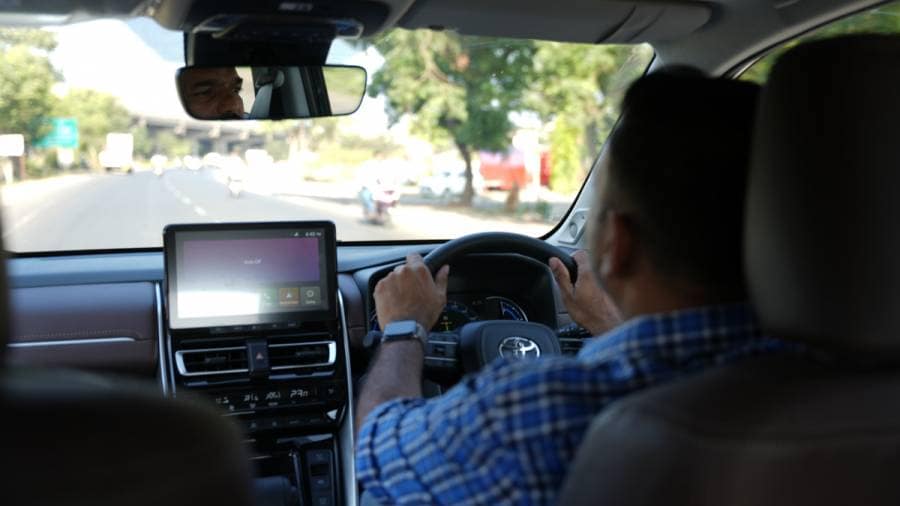
The biggest impression comes from the drivetrain of the Innova Hycross. We drove the two cars in crawling Pune traffic, where the hybrid system truly was in its element. You start off in electric mode usually and while the engine does kick in quickly enough, there's always a strong amount of EV assistance at city speeds. So in a congested city like Pune, you'll find that the battery recharges quickly enough and the Hycross is extremely efficient as our 23.69 kmpl figure suggests.
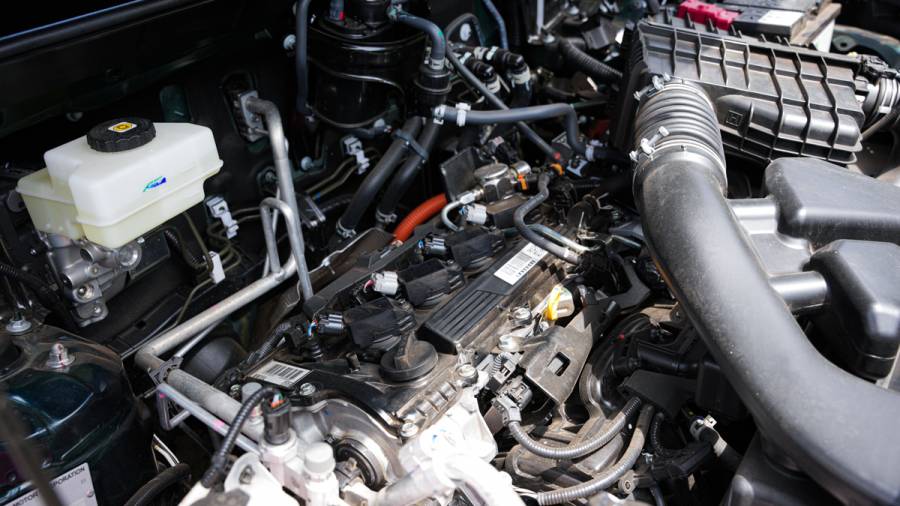
At these times the engine is fairly loud but not too many vibrations filter into the cabin. You have that seamless power delivery, which may not have the turbo-diesel shove of the Crysta, but is very easy to get used to with how unassuming it makes progress. The CVT also works well enough as long as you keep things sedate, helped by the electric power tidying over any delays.
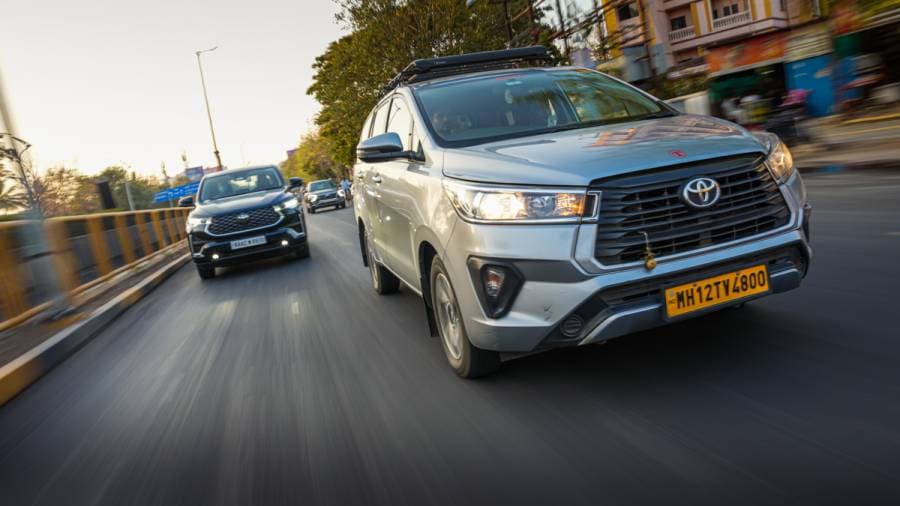
Understandably, the Crysta takes a bit more effort in such conditions. The engine is a 2.4-litre diesel that makes 150PS and 343 Nm with the manual or 360 Nm with the auto. It's got a slow-revving nature to it, more focused on longevity than exciting performance. So while in the manual there is lag for you to deal with, the sheer displacement and tractability of the motor mean that you don't find yourself shifting all that often in the city. Of course, efficiency isn't comparable to the Hycross here, we managed 9.41 kmpl as you find yourself below the optimal efficiency range of the engine.
Toyota Innova Hycross and Innova Crysta highway driving, mileage
The Innova's mile-munching ability is now the stuff of automotive legends. The Crysta has only strengthened this further over the last decade it's been around. This ability continues to hold it in good stead in the company of the Hycross.
The Crysta is still the better highway machine in many aspects. The Hycross starts to lose its electrical boost closer to triple-digit speeds which makes the engine work quite noisily to hold speeds and make overtakes here. Progress too isn't quite as brisk as in the city without there being the electrical boost which can also not mask a CVT's disadvantages in this situation.
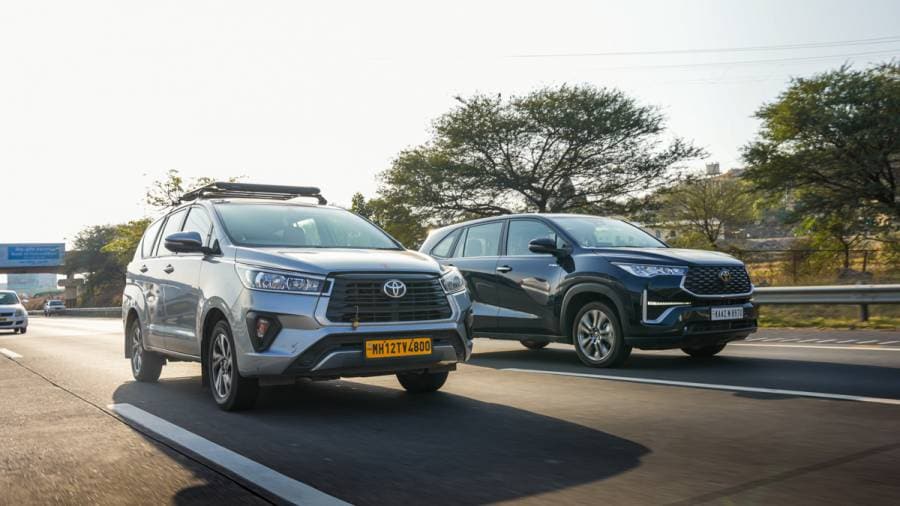
There's no such trouble with the Crysta. The lazy motor is now in its sweet spot, it's still not pulling too many revs within speed limits and you find yourself making progress in a more fluid manner. There's quite a bit of torque left at hand to make overtakes and pick up speed. So while the Crysta might not be any faster and there's notable diesel clatter, it feels less strained in these situations. This also means that it claws back marginal ground in the efficiency stakes from the Hycross, we saw it return 18.05 kmpl to the hybrid's 17.62 kmpl. Despite the reduced electrical assistance, the Hycross is still far more efficient than any comparable petrol alternative.

On our drive up to Lonavala from Pune on the Mumbai-Pune expressway, we also found the Crysta to be more comfortable on this highway's uneven concrete surface. The Hycross's steering does have good heft here and you do feel a sense of assurance coming through the wheel. But we found the Hycross tends to keep making minor movements over these uneven surfaces that can get noticeable after a point. That said, on a later drive with four passengers on board this trait was subdued quite a bit.
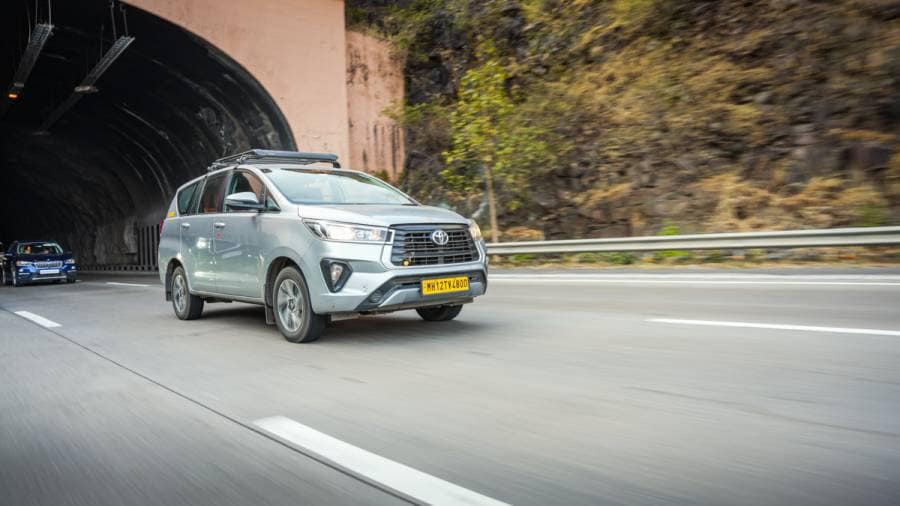
The Crysta on the other hand settles into a smooth demeanour in these conditions. There's a sense of solidity here that the Hycross also manages to reach quite closely but this is accentuated by a stability that does make for a soothing experience in most load conditions. That said over rough patches at high speeds, it's Hycross that soaks up bumps better. The Crysta isn't spared from the typical ladder-frame jitters.
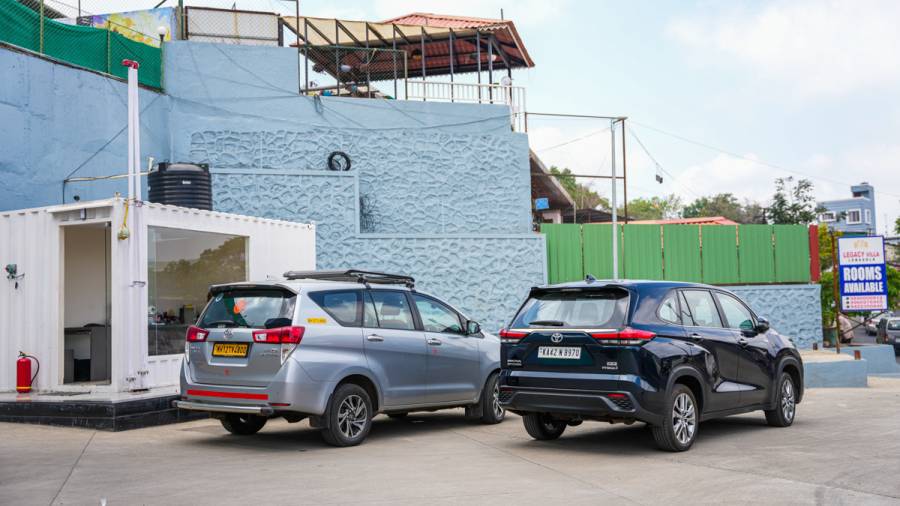
Toyota Innova Hycross and Innova Crysta prices, conclusion
The Innova Crysta tops out at Rs 23.86 lakh and the Hycross at Rs 35.56 lakh, and having spent time in close quarters with both, it's clear what Toyota has tried to do with its new hybrid offering. The Toyota Innova Hycross is a new, future-ready take on the Innova formula. It's not a replacement for the Crysta, at least for now, where big diesels still have some life left in the country. What it is is a more contemporary upgrade for those who have maybe outgrown the pointed functionality of the Crysta with its more modern interiors, far greater tech and efficient architecture and powertrain. The Crysta on the other hand, soldiers on doing what it does best. A classless, dependable workhorse that'll do the job of a comfortable people-mover without too much fanfare.
Starts Rs 16.26 Lakhs
2393cc
Automatic
150
360
-NA-
